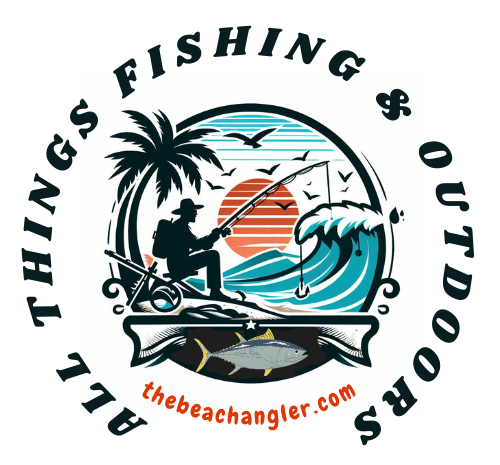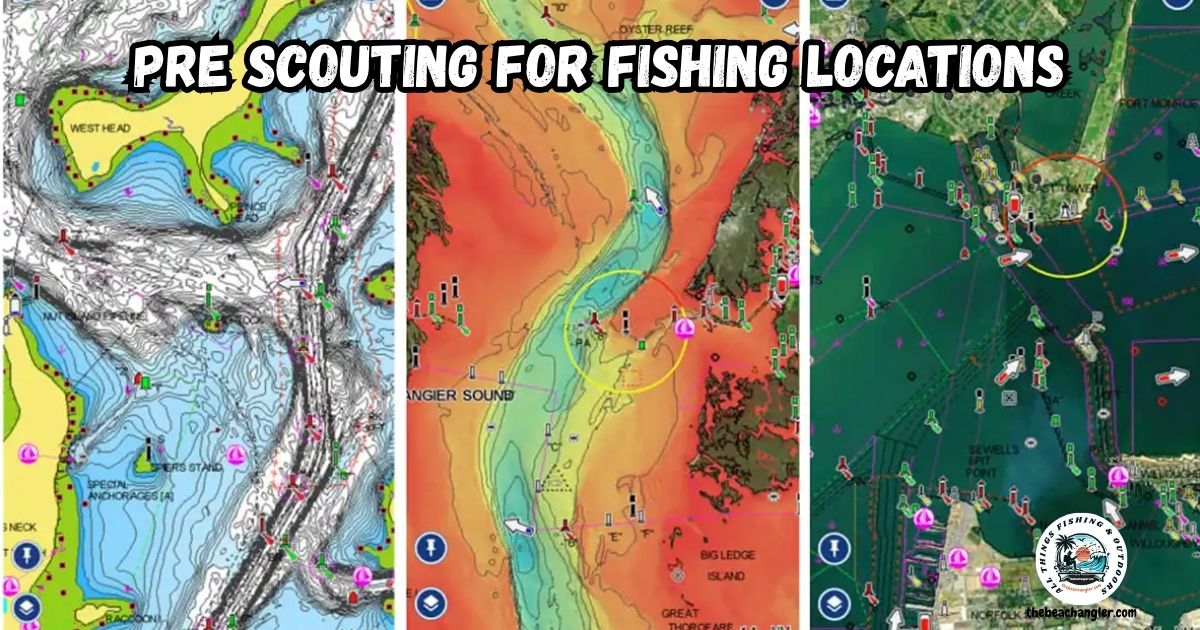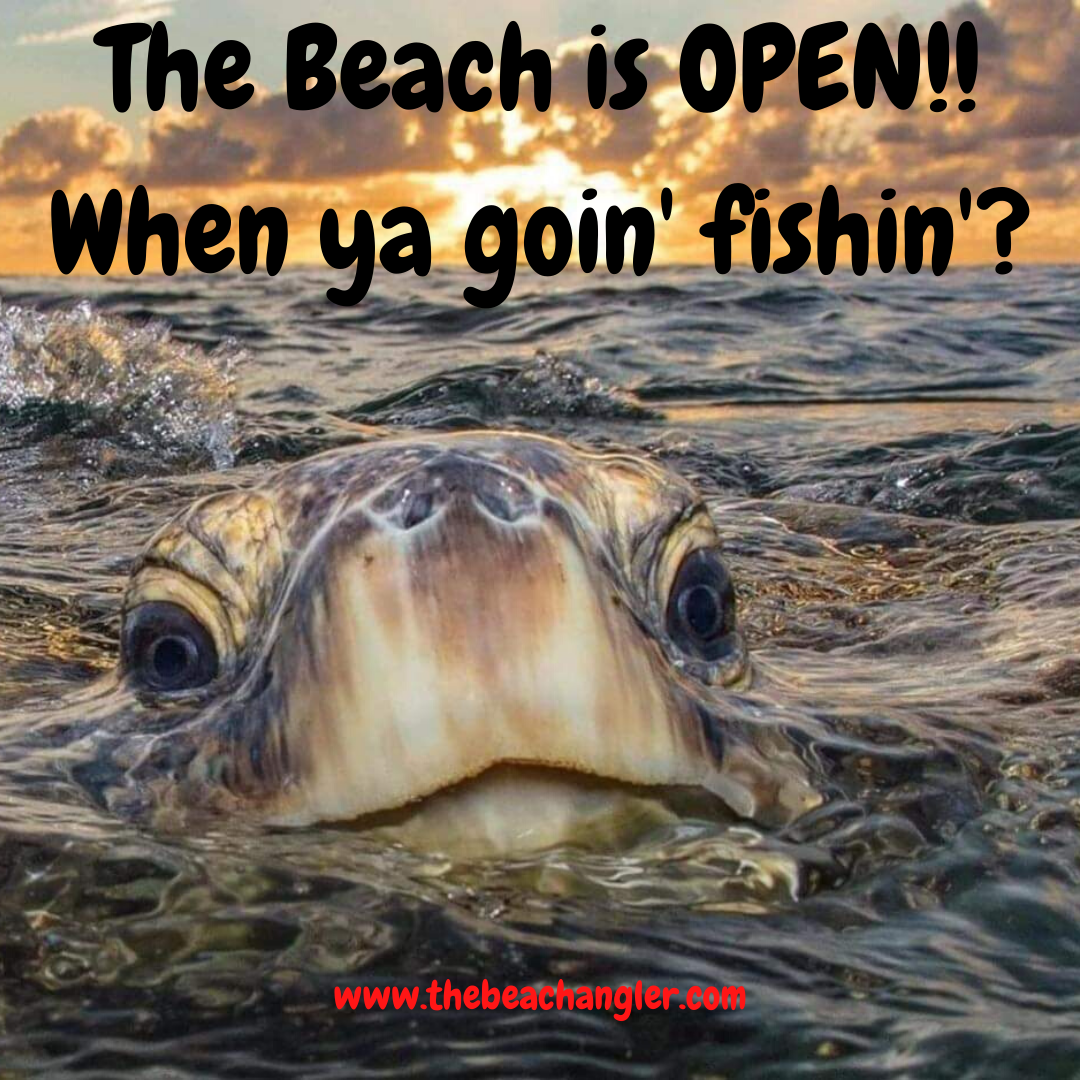Finding a great fishing spot can make your trip much more enjoyable, but it’s not always easy to know where to start looking. Technology can make a difference when it comes to pre-scouting fishing locations, with so many apps, maps, and new gadgets available now. In this article, I’m breaking down the key tools and tips I rely on to make planning a fishing outing simpler and more successful.
QUICK LOOK: Key Apps for Pre-Scouting for Fishing Locations
- Navionics Boating: I rely on this app for detailed marine charts and updates from the community. It’s excellent for marking spots and planning routes, especially if I’m boating or kayaking.
- Garmin ActiveCaptain: This works with Garmin devices and provides quick access to navigation data, local points of interest, and fishing reports.
- Aqua Map: Offering features like tide graphs, fish activity forecasts, and detailed mapping, it’s my go-to for checking out new inshore or offshore areas.
- Fishing Points: I use this to mark GPS spots, log catches, and see current weather and tidal trends, even when offline.
- Fishbrain: For tips and insights shared by other anglers, I check this app for recent catch reports and locations.
- Tide Alert (NOAA): I like to stay updated on upcoming extreme tide events, which helps me time my trip for when fish activity jumps.
- Buoyweather: I trust this for reliable marine forecasts, wind speeds, and wave trends—especially if I plan to fish offshore or by kayak.
- SideScan and Live Sonar: Used with compatible fish finders, this tech lets me preview what’s under the surface so I’m not just guessing where structure could be.
Technology Essentials for Scouting Fishing Locations
Fishing technology has come a long way, making it easier than ever for both serious anglers and casual hobbyists to find the right spots. With access to better maps, weather info, and community feedback, I feel much more confident when I want to try out a new location or target a specific fish species.
Many of these advancements started off as basic charting tools or GPS devices. Nowadays, though, some apps and systems bring together everything—from marine navigation to sonar and real-time weather. With the fishing tech market growing steadily, there are now options for nearly every type of angler, whether you’re fishing from a boat, kayak, or on foot.
Getting Started: Basic Tools to Scout a Fishing Spot
Before heading out, I like to have a plan. Knowing where the fish might be, what the water’s like, and what to expect with weather and tides always makes a big difference. Here are some tools that I find helpful for scouting fishing locations ahead of time:
- Marine Navigation and Mapping Apps: These apps provide up-to-date charts, navigation markers, and hazard info. I use them to check for dropoffs, weed beds, and underwater structures where fish might hang out.
- Tide and Current Apps: Fishing success—especially in saltwater—often depends on tides. These apps give tide tables, predictions, and even alerts for peak fishing times, making timing easier.
- Weather Apps: A quick check of marine weather, wind directions, temperature, and storm warnings can keep my trip both fun and safe every time.
- Sonar and Fish Finder Tech: These devices show underwater features, fish arches, and let me see the layout before I cast a line, giving me a head start on any outing.
- Community and Social Fishing Apps: These platforms can be a goldmine for local tips and fishing reports. I find it helpful to see what other anglers are catching and where, and sometimes even get in touch with new fishing buddies.
Guide to Scouting with Technology: Steps I Follow
When I’m planning a trip, I follow a handful of steps to organize my scouting. Here’s what works best for me:
- Check Local Regulations and Access: Some areas have fishing restrictions, or access may be tricky. I check maps and permit info to avoid any problems.
- Use Mapping Tools to Identify Likely Spots: I zoom in on maps to mark points, coves, reefs, or inshore dropoffs—places I know fish gather.
- Review Weather and Tide Predictions: By timing my trip for rising or falling tides and checking wind and storm forecasts, I’m more likely to stumble upon active fish.
- Cross-Reference Info From Community Apps: I always look for recent catch reports or reach out to local groups for advice on bait and technique.
- Stay Flexible and Ready to Adjust: I plan backup locations in case my main spot is crowded or if the weather suddenly mixes it up.
Following these steps helps make sure I pick a spot that matches the day’s conditions and my fishing goals.
Key Technologies and Apps Worth Checking Out
Here are some technologies and apps that I have found valuable when pre-scouting for fishing:
- Navionics Boating: I rely on this app for detailed marine charts and updates from the community. It’s excellent for marking spots and planning routes, especially if I’m boating or kayaking.
- Garmin ActiveCaptain: This works with Garmin devices and provides quick access to navigation data, local points of interest, and fishing reports.
- Aqua Map: Offering features like tide graphs, fish activity forecasts, and detailed mapping, it’s my go-to for checking out new inshore or offshore areas.
- Fishing Points: I use this to mark GPS spots, log catches, and see current weather and tidal trends, even when offline.
- Fishbrain: For tips and insights shared by other anglers, I check this app for recent catch reports and locations.
- Tide Alert (NOAA): I like to stay updated on upcoming extreme tide events, which helps me time my trip for when fish activity jumps.
- Buoyweather: I trust this for reliable marine forecasts, wind speeds, and wave trends—especially if I plan to fish offshore or by kayak.
- SideScan and Live Sonar: Used with compatible fish finders, this tech lets me preview what’s under the surface so I’m not just guessing where structure could be.
Things I Consider Before Investing in Fishing Tech
Just like any new hobby, getting into fishing tech means thinking it through first. Here’s what I consider before choosing gear or a new app:
- Cost and Value: Some top apps offer free versions, but the extra features may cost more. I weigh whether the premium functions fit my fishing style or budget.
- Device Compatibility: Certain apps and sonar tech require specific phones, tablets, or fish finder brands. I double-check that my gear is all matched up before buying anything new.
- Learning Curve: Mapping and sonar tools can take a bit of practice. I set time aside to learn the basics before using them out on the water.
- Updating Data: Timely updates on maps, tides, and weather are important. I’ve found that outdated info may lead to missed chances or even safety hazards.
- Sensitivity of Local Spots: Some community apps make fishing locations public. I’m careful not to give away fragile or overfished areas.
App and Device Battery Life
Running GPS, sonar, and chart apps can run down phone batteries quickly. I usually bring a portable charger or two and make sure my fish finder batteries are charged the night before my trip.
Waterproofing and Durability
If I’m kayaking, wading, or in a small boat, I keep all my devices in waterproof cases or dry bags. A dropped phone is usually gone for good in deep or moving water, so having a floating case brings some extra peace of mind.
Understanding Features
Not all mapping or sonar apps bring the same coverage or provide real-time updates. I like to read reviews and try trial versions first, just to see if the coverage fits my fishing areas.
Planning, preparation, and a bit of practice help smooth the way toward more productive fishing trips. Tech can give a boost, but it works best when paired with on-the-water experience and some local know-how.
Tips and Tricks To Get More From Your Scouting Tech
Once I got the basics down, I picked up a few tips for using these tools more effectively:
Layer Your Information: I compare info from different apps, such as using a navigation app alongside weather and tide forecasts, to get a bigger picture of each fishing spot. Each app adds a new angle, and combining sources usually leads to better choices.
Save Your Waypoints: I always save GPS marks for promising spots, structure, or places where I caught fish. That way, I can return to areas that work or spot patterns over time.
Share But Don’t Overshare: I’ll talk about good finds with trusted friends but won’t post exact spots online. This helps protect special fishing areas from becoming overcrowded.
Customize Alerts and Settings: Many apps let you set weather, tide, or catch alerts. Setting my own notifications helps me stay ahead of the game with upcoming conditions that match my favorite species or style.
By following these tips, I catch more fish and waste less time guessing, and it makes technology feel like a natural part of my fishing process.
The Basics: What Tech Should Beginners Explore First?
If you’re new to all this, a basic tech setup is usually more effective than buying every gadget right away. I suggest starting with these essentials:
- GPSEnabled Mapping App: Free versions already provide tons of value for trip planning.
- Community Fishing App: Tapping into shared catches and tactics cuts your learning curve by leaps and bounds.
- Simple Fish Finder: Affordable, castable, or portable fish finders reveal what’s underwater without breaking the bank.
- Power Source: Having an external charger keeps gadgets going all day, which is extra handy for longer fishing trips.
Even with just these basics, I’ve found entirely new fishing grounds, avoided hazards, and tracked strategies that keep working. For example, I once found a great spot on a local lake using just a budget fish finder, and after sharing with a group, we all did better there.
- Shoreline Structure Location: Tech tools help me spot places like submerged brush, rock piles, or places where the water depth changes quickly.
- New Water Exploration: Community apps open my eyes to lesser-known spots and lakes that I hadn’t even thought to try.
- Seasonal Spot Mapping: Over time, saving waypoints and logs helps me track where fish move with the seasons and cut down on wasted time.
Frequently Asked Questions
Here are some questions I often get or have asked myself about using technology to pre-scout fishing spots:
What’s the easiest way to start with fishing tech?
Begin with a free mapping app and join a fishing community app to learn the ropes. As you get more comfortable, add tide charts or a basic fish finder.
Can I scout spots without cell service?
Many apps now have offline maps and saved waypoints. Always download maps and info before leaving home, and bring a GPS or device with offline support.
Is sonar gear worth it if I fish from shore?
Absolutely, castable sonar or portable fish finders help see what’s underwater while wading or fishing from docks and piers, too.
Conclusion
Having the right technology at your fingertips gives you a major edge in tracking down fishing spots that deliver. Whether you’re mapping your adventure with a navigation app or checking conditions on the fly with sonar, these tools boost confidence for both beginners and experienced anglers.
I’ve found my fishing trips a lot more relaxing and successful since embracing these scouting technologies. If you want to up your catch rates and get more out of your fishing time, tracking down and using a few of these tools is a great place to start.
Check Out Our Most Recent Articles:
- Okuma Makaira Spinning Reel
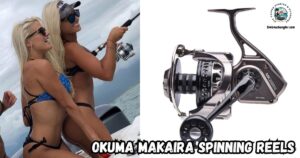
- Technology For Pre Scouting Fishing Locations
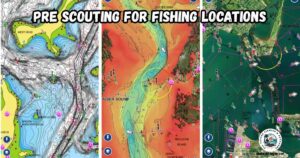
- 6 Advantages of the Okuma Azores Blue Saltwater Spinning Reel
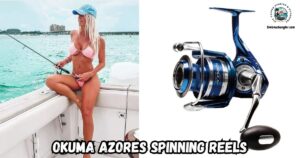
- How Does The 80/20 Rule Apply To Saltwater Fishing
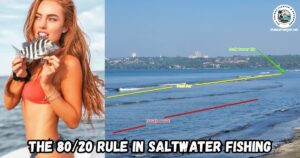
- KastKing Estuary Inshore Saltwater Fishing Rods Are A Practical Choice
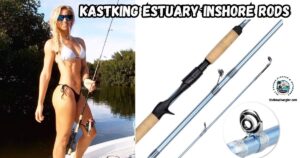
- 4 Top Spots for Ocean Salmon Fishing In The Pacific Northwest
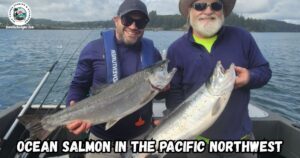
As always, stay safe, enjoy the journey, and please try to leave it cleaner than you found it. If you have any comments, questions, ideas, or suggestions, please leave them in the comment section below, and I’ll get back to you ASAP. You can follow us on Facebook: Rex The Beach Angler, Instagram: thebeachangler7, Twitter: @AnglerBeach, and YouTube: Man Art Creations.
P.S. Thanks so much for checking out our blog; we really appreciate it. Just so you know, we may receive a commission if you click on some of the links that appear on our site. This helps us keep our content free and up-to-date for everyone. We appreciate your support!
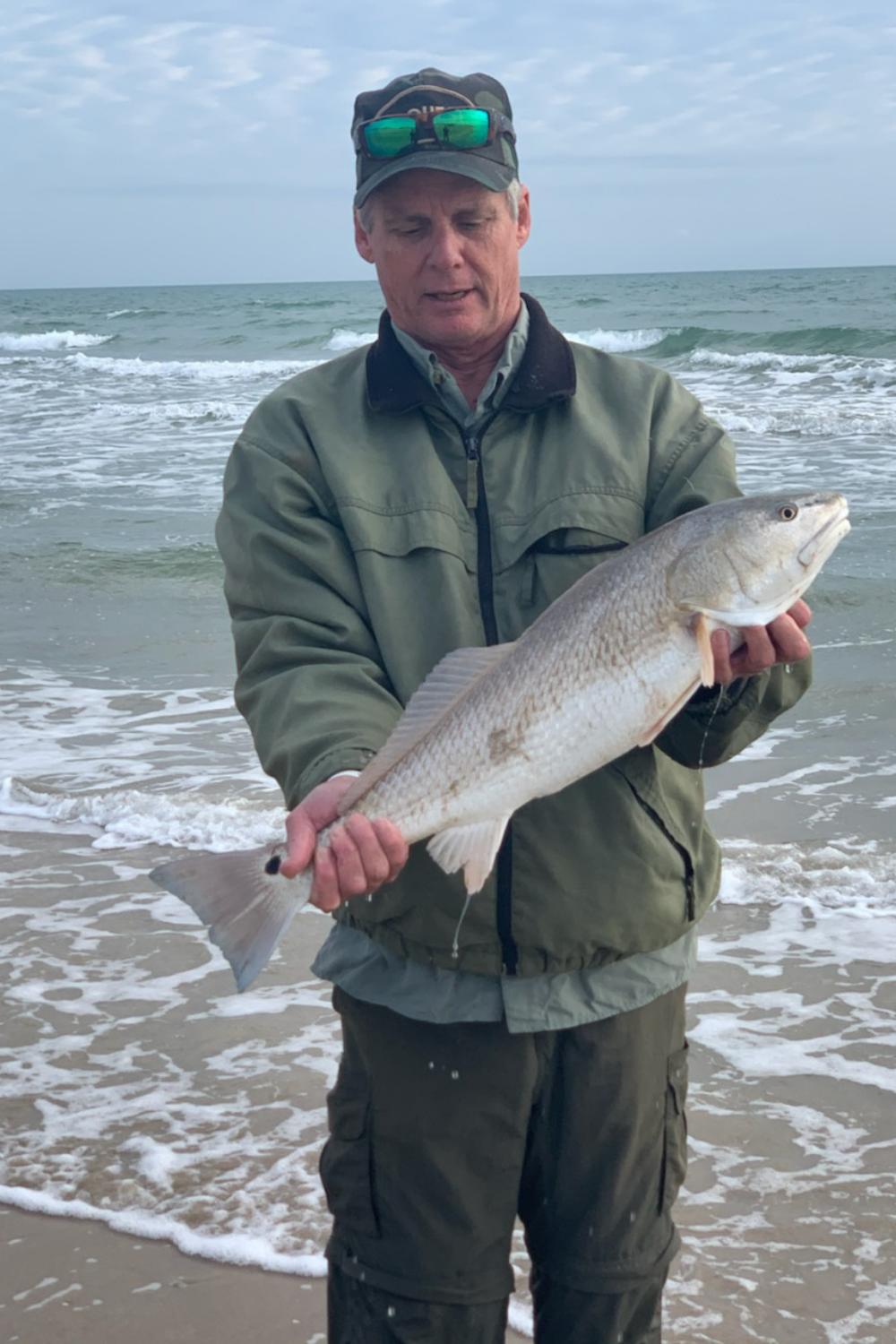
A life long surf fisherman with 50+ years of experience, I am also an avid hunter and outdoorsman. I will be sharing my passion for the outdoors with you so be prepared for hunting, fishing, camping, hiking and more. Along with gear reviews and the latest trends and innovations in the outdoor industry.
